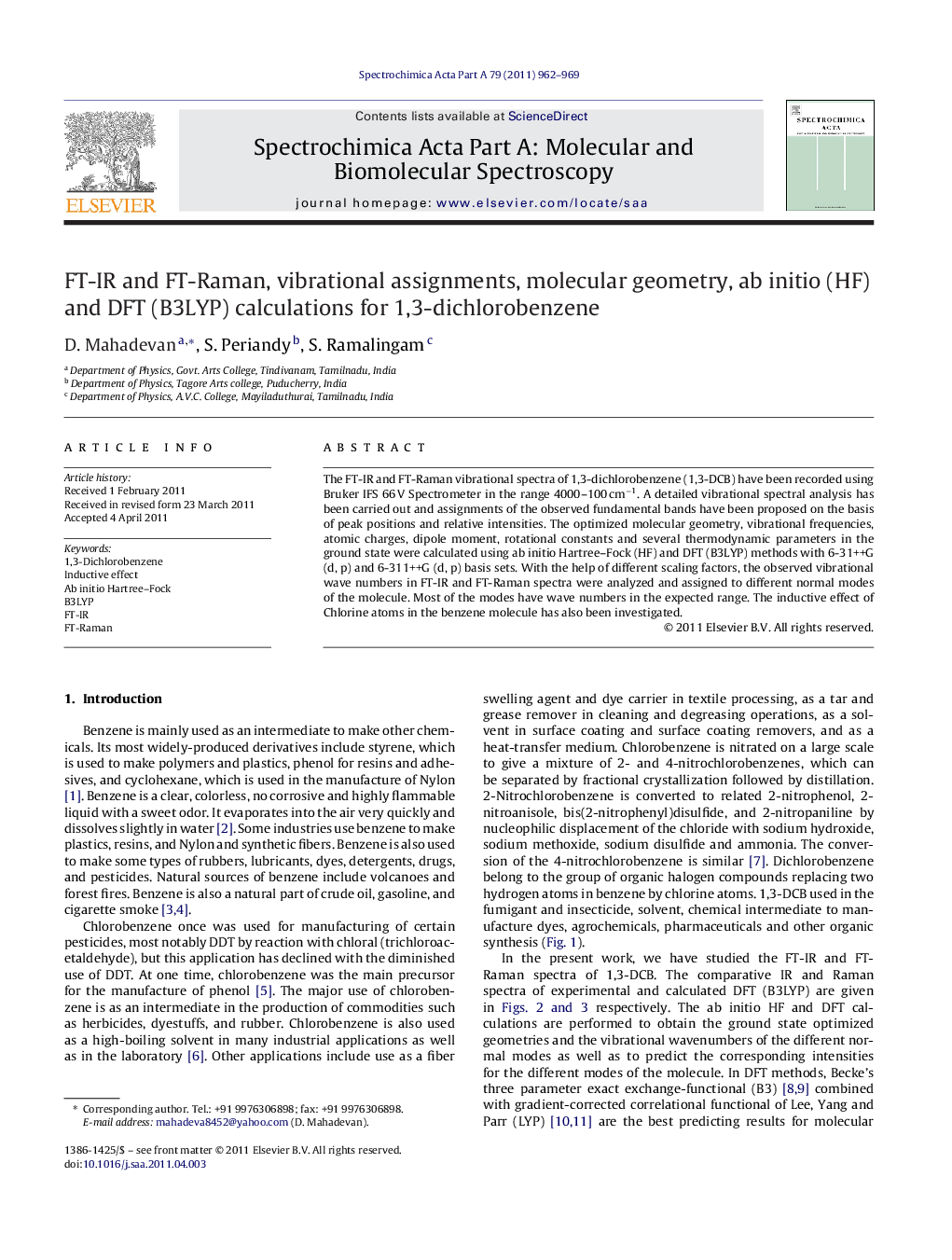| Article ID | Journal | Published Year | Pages | File Type |
|---|---|---|---|---|
| 1236473 | Spectrochimica Acta Part A: Molecular and Biomolecular Spectroscopy | 2011 | 8 Pages |
The FT-IR and FT-Raman vibrational spectra of 1,3-dichlorobenzene (1,3-DCB) have been recorded using Bruker IFS 66 V Spectrometer in the range 4000–100 cm−1. A detailed vibrational spectral analysis has been carried out and assignments of the observed fundamental bands have been proposed on the basis of peak positions and relative intensities. The optimized molecular geometry, vibrational frequencies, atomic charges, dipole moment, rotational constants and several thermodynamic parameters in the ground state were calculated using ab initio Hartree–Fock (HF) and DFT (B3LYP) methods with 6-31++G (d, p) and 6-311++G (d, p) basis sets. With the help of different scaling factors, the observed vibrational wave numbers in FT-IR and FT-Raman spectra were analyzed and assigned to different normal modes of the molecule. Most of the modes have wave numbers in the expected range. The inductive effect of Chlorine atoms in the benzene molecule has also been investigated.
Graphical abstractThe FT-IR and FT-Raman vibrational spectra of 1,3-dichlorobenzene (1,3-DCB) have been recorded using Bruker IFS 66V Spectrometer in the range 4000–100 cm−1. A detailed vibrational spectral analysis has been carried out and assignments of the observed fundamental bands have been proposed on the basis of peak positions and relative intensities. The optimized molecular geometry, vibrational frequencies, atomic charges, dipole moment, rotational constants and several thermodynamic parameters in the ground state were calculated using ab initio Hartree–Fock (HF) and DFT (B3LYP) methods with 6-31++G (d, p) and 6-311++G (d, p) basis sets. With the help of different scaling factors, the observed vibrational wave numbers in FT-IR and FT-Raman spectra were analyzed and assigned to different normal modes of the molecule. Most of the modes have wave numbers in the expected range. The results of the calculations were applied to simulated infrared and Raman spectra of the 1,3-DCB which showed excellent agreement with the observed spectra. The inductive effect of chlorine atoms in the molecule has also been investigated.Figure optionsDownload full-size imageDownload as PowerPoint slideHighlights► The FT-IR and FT-Raman vibrational spectra of 1, 3-Dichlorobenzene (1, 3-DCB) have been recorded. ► The molecular structure of the title compound in the ground state is computed both ab-initio (HF) and DFT methods. ► Computed vibrational spectral IR intensities and Raman activities for corresponding wave numbers by HF and DFT methods have been discussed. ► The standard deviation (SD) calculation made between experimental and computed frequencies (HF/DFT) is presented. ► The inductive effect of Chlorine atoms in the pedestal molecule has also been investigated.
